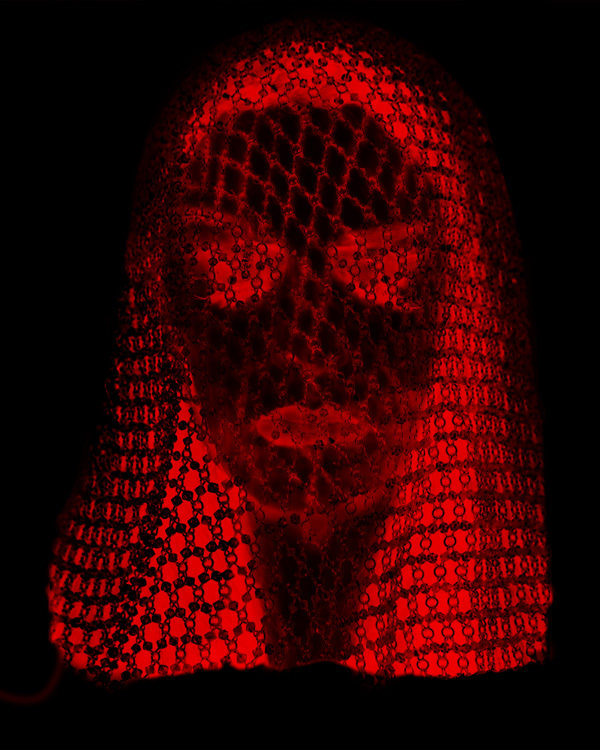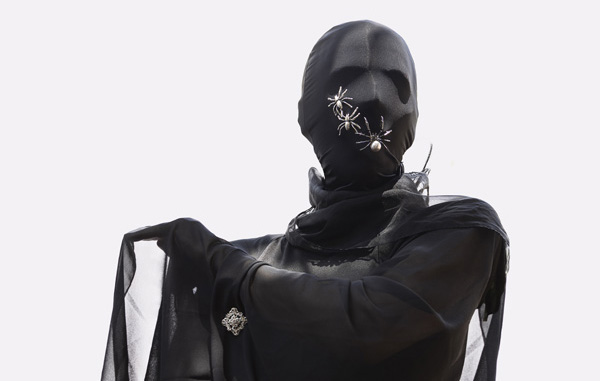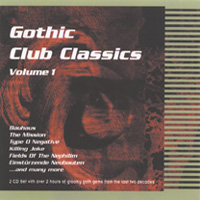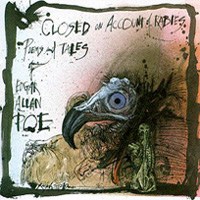 Diamanda Galás releases New Album Broken Gargoyles
Diamanda Galás releases New Album Broken Gargoyles
Today renowned singer, composer and pianist Diamanda Galás has released her new album, Broken Gargoyles via Intravenal Sound Operations. Employing a vast array of advanced vocal and instrumental techniques, Broken Gargoyles is arguably Galás’ most intellectually, sonically, and viscerally formidable work to date. The album’s title refers to WW1 soldiers who were so facially disfigured that they were called “broken gargoyles.” The album finds the visionary artist deftly probing the weaving, warping transformation on the nervous systems of her post-traumatic soldiers and dying diseased.
Broken Gargoyles was composed between the years of 2012 and 2022. The first sound installation of the work was presented by the Kestnergesellschaft at the Kapellen Leprosarium (Leper’s Sanctuary) in Hanover, Germany. The sanctuary was built around 1250 and served as a quarantine for those who suffered from the plague and leprosy in the Middle Ages. Broken Gargoyles was finalized in collaboration with the artist and sound designer Daniel Neumann. Talking of their work together, he says, “It was a wild working method, all remotely, with all these different pre-existing and newly recorded fragments.”
In May, in Braga, Portugal’s Theatro Circo hosted the sound installation at the Capela S. Bento. Galás wrote the presenters this: “Broken Gargoyles refers to the cynical denomination of the soldiers and their war-disfigured faces. Surgery was performed upon them in order to send them to the backlines of the theatre operation. Most were released with no support, and hidden, special housing units were designed to house those with no arms and legs, and mutilated faces. Some of these dead alive were used for medical experimentation. Dalton Trumbo wrote of this last occasion in Johnny Got His Gun, in which his SOS tapping was ignored in order to continue medical study.”
Broken Gargoyles features verses by German poet Georg Heym, “Das Fieberspital” and “Die Dämonen der Stadt.” In “Das Fieberspital” Heym describes the horrific state of people suffering from yellow fever who live in paralyzing fear of death and swirling delirium owing to their brutal treatment and isolation in medical wards in early 20th-century Germany. “Die Dämonen der Stadt” also addresses such grim portents of World War I; in this poem, the god Baal observes (like a gargoyle) a town from a rooftop of a city block at nighttime and lets a street burn down during dawn.
The album’s first part, “Mutilatus,” contains the Heym poems “Das Fieberspital” and “Die Dämonen der Stadt,” and concerns the suffering of the soldier in the trenches and during innumerable operations in the hospital.
“Mutilatus” was originally recorded in 2012-2013 in collaboration with recording and mix engineer Kris Townes and serves as a welcome into a parallel world of doom and delusion foretold. Sustained, portentous low-end piano rumble and Galás’ solo and multiplied voices create evanescent masses of tonality and, pertinently, a resonant frequency clash or harmonic distortion. You can hear it and feel it: She is inside her subjects, as if to emphasize with the sweaty diffusion of the patients’ feverish minds. When this extraordinary introduction of “Mutilatus” recedes in an approaching chilly ill wind, Galás intones over subdued whining electronics, cawing birds, semi-human verbalizations, and something somewhere between these things. Representing the doomed, their punishers, and perhaps her listeners, in all our delusional wisdom, she rasps out words, or the sound of words; the electronic whine rises and falls. Then piano, left-hand low, and “vocalese” so high in deliberately splintery disfigurement, which gives way to the piano’s pulsing beat-figure darkly looming over the hill amid a babble of human voices and dark clouds of ravens.
The often Sisyphean sound throughout Broken Gargoyles plumbs great depths in the album’s second part, “Abiectio” (humiliation, dejection, despondency), which draws from the Heym poems “Der Blinde” and “Der Hunger” and the last verses of “Das Fieberspital.” Feedback moans over impending piano thunder, Galás rough-grain wheezes, bawls, and howls. Multilayered voice becomes a flock of winged creatures. The affected vocal throngs reach out diseased limbs, mangled faces. Where humans become beasts become… A blind man is forced outside of an asylum to die, with the order “Look into the sun!” Galás makes the inference that the sun burns him alive. A man made delirious and dying through hunger and the sun (again) forces open the jaws of a hound in order to devour him and ends up falling into a dark crevice, where he disappears. The voice at the end of “Das Fieberspital” speaks as one with a burned throat might, through what sounds like an electrolarynx – again a herald to fire, dehydration. This part of the poem observes the patients laughing in derision and delirium at the priest who approaches the bed of a man dying of yellow fever in order to give him the Last Rites. The dying man impales the priest with a stone he had been sharpening.

Broken Gargoyles Tracklist:
1. Mutilatus
2. Abiectio
The Broken Gargoyles’ CD comes with a 24 page booklet which contains one 24 and one 12 page booklet featuring:
- 4 poems: Das Fieberspital, Die Daemonen der Stadt, Der Blinde, and Der Hunger by Georg Heym in German and their translations in English by Antony Hasler.
- Numerous images of Diamanda Galás taken by Intravenal Sound Operations and Austin Young.
- Photo documentation of facially mutilated soldiers during WWI, compiled by Ernst Friedrich in War Against War.
- Photo of Broken Gargoyles Installation at the Kapellen Leprosarium (the Leper’s Sanctuary) Hannover 2021 by Robert Knoke.
- Essays by Dr. Julia Meier of the Kestnergesellschaft Hannover and Luca Zanchi, from the upcoming book Gorgon in The Blue Room: Diamanda Galás and the Divine Monster of Grief (soon to be published).
- 4 paintings by Diamanda Galás.
Pre-order Diamanda Galás’ Broken Gargoyles here. Earlier this year, Diamanda Galás reissued a remastered version of her 1986 classic The Divine Punishment – find that here.

About Diamanda Galás:
The San Diego-born Galás came up playing both classical and jazz music. She not only accompanied her Anatolian Greek father’s gospel choir and joined his New Orleans-style band, but also performed as a piano soloist with the San Diego Symphony at the age of 14. She went on to play with various groups that included heavies of the new-jazz thing, such as a circa-’74 combo in Pomona, California, that included cornetist Bobby Bradford, sax man David Murray, bassist Mark Dresser, and drummer Stanley Crouch. She made her first public performance in 1979, collaborating on an opera with Vinko Globokar and Amnesty International about the arrest, torture, and assassination of a Turkish woman for treason. In 1982, she released her debut album, The Litanies of Satan, which showcased her early forays into unorthodox vocal expression and multiphonics, and which included an 18-minute performance piece titled “Wild Women With Steak Knives.” She has created work dealing with AIDS (including the recently re-mastered The Divine Punishment), genocide, and mental disease, as well as compositions for voice and piano set to the works of exiled poets. She also collaborated with Led Zeppelin’s John Paul Jones on the 1994 album The Sporting Life.




